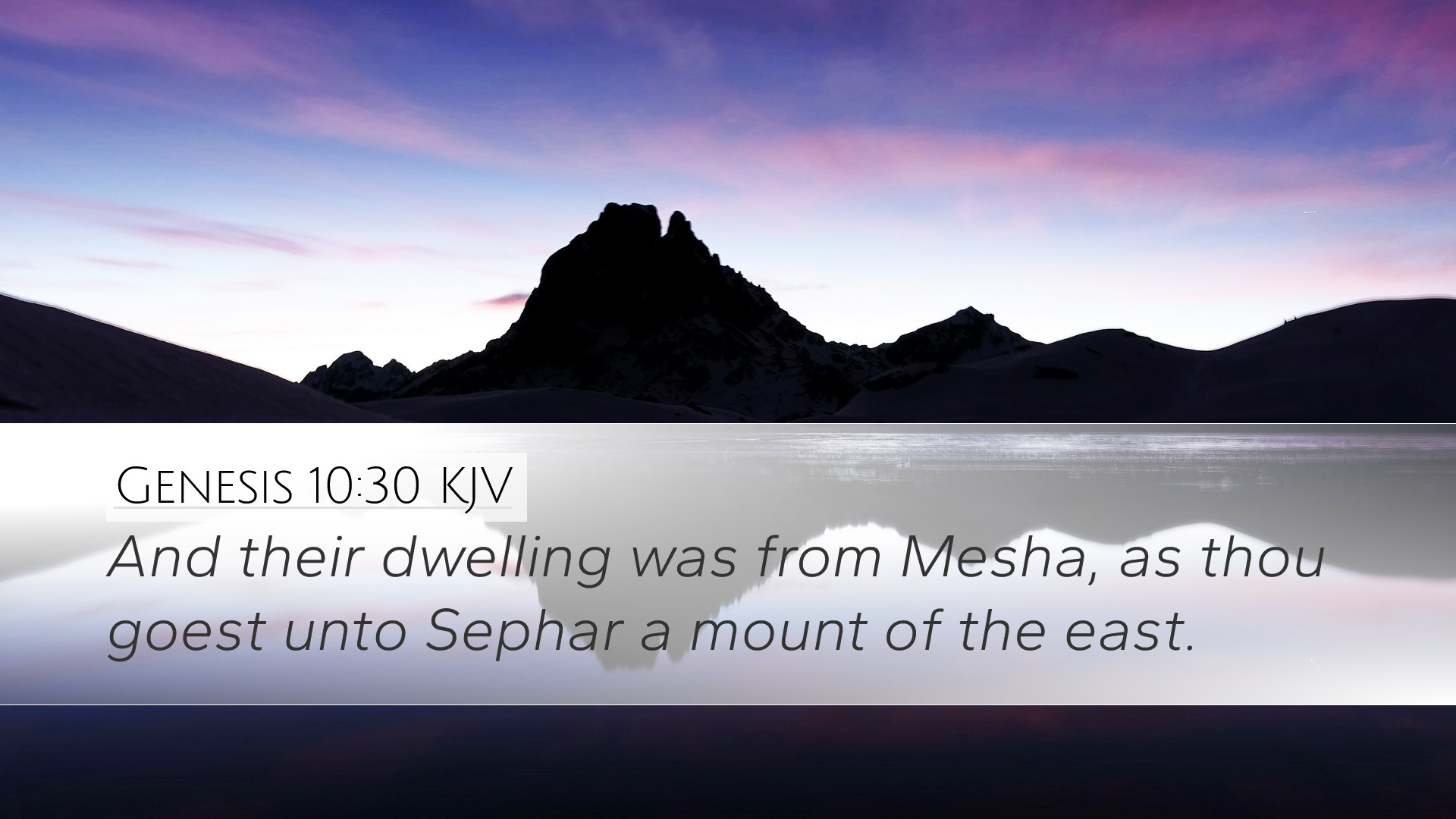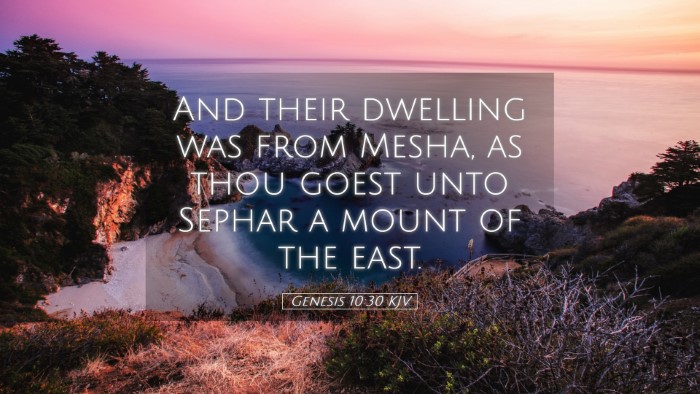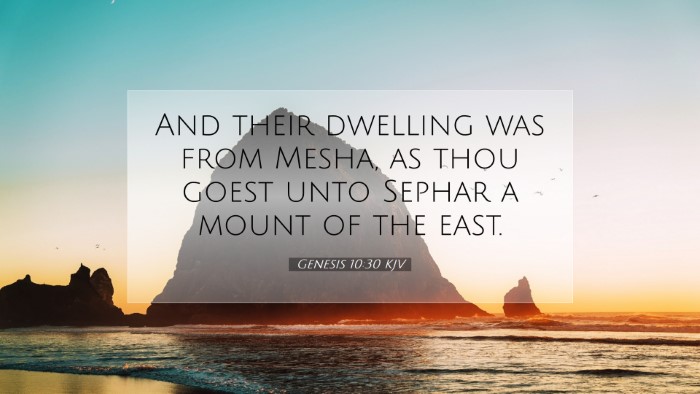Commentary on Genesis 10:30
Verse: "And their dwelling was from Mesha, as thou goest unto Sephar a mount of the east."
Contextual Overview
Genesis 10 presents the genealogical table often referred to as the Table of Nations, detailing the descendants of Noah's sons: Shem, Ham, and Japheth. This chapter serves to highlight the origins of various peoples and their dispersion across the earth after the Flood.
In Genesis 10:30, we examine the descendants of Joktan, whose lineage is significant in understanding ancient geography and the movement of cultures post-deluge.
Geographical Significance
The reference to "Mesha" and "Sephar" is paramount in biblical geography. These locations are often debated among scholars.
Matthew Henry posits that Mesha may correspond to regions in modern-day Arabia, indicating a significant migration and settlement pattern. This highlights the mobility of Joktan's descendants, suggesting that they occupied a promising area for trade and agriculture.
Albert Barnes complements this view by emphasizing that Sephar, suggested to be in the East, reflects the movements toward known mountainous regions, which often denote safety and resource availability.
Understanding Joktan's Lineage
Joktan’s descendants are often characterized by their spreading and establishment of settlements across Arabia.
Adam Clarke notes that the term "Joktan" is Hebrew and reflects a position of "smallness" or "lesser". However, his descendants became significant in their cultural contributions, establishing tribes and cities that influence regions in both cultural and historical terms.
Theological Insights
The movements of these individuals convey a profound theological message about divine providence and human agency.
The God who commands the universe also allows for the dispersion of nations, and this ultimately lays the groundwork for future redemptive histories, as seen in the unfolding biblical narrative that approaches the Abrahamic covenant.
Matthew Henry notes that the varied descendants serve as reminders of God's diverse creation and the complexity of human societies formed from a common ancestry. The coexistence of different nations and cultures reflects the unfolding nature of God’s plan and purposes among humanity.
Applications for Modern Readers
For pastors, students, and scholars, this brief yet potent verse encapsulates broader theological and historical themes.
- Understanding Cultural Diversity: As descendants of Noah spread, it reflects the rich tapestry of cultures that the Church seeks to engage today.
- The Call to Unity: Despite diverse origins, the overarching narrative leads to unity in Christ, a vital point of application in sermons and teachings.
- Missional Implications: Recognizing the mobilization of people groups can inspire contemporary mission efforts to reach various cultures worldwide.
Conclusion
Genesis 10:30 serves as a gateway to understanding not only the historical context of the nations but also the ongoing theological discussions surrounding human history and divine providence.
The insights from public domain commentaries elucidate how this seemingly simple verse is rooted in profound truths about human nature, God's sovereignty, and the mission of the Church. Engaging with this text should inspire further inquiry into the dynamics of scripture and its impact on ecclesiology, missiology, and anthropology.


